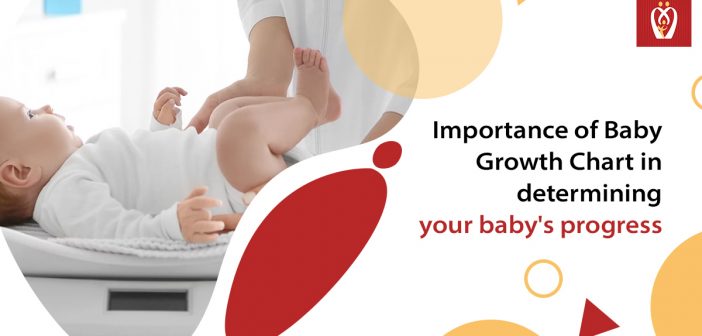You might wish to keep track of your child’s development now that you’ve become a parent. A baby growth chart tool can help with this need by allowing the GP/midwife to track your child’s progress. Reading the baby growth chart can be intimidating at first. However, you can ask your doctor to help you understand this helpful tool and what the results indicate for your child.
What Are Baby Growth Charts and How Do They Work?
Baby growth charts are crucial tools that doctors use to monitor your child’s general health. The charts are used to compare your baby’s growth to that of other children of the same age and gender. It also tracks their development over time. For example, for babies under the age of 24 months, growth standards are used to check the following:
- Weight-
- Length/Height
- Head circumference
Boys and girls have separate charts, as do newborns younger than 24 months and those older than two years. It’s important to understand that these charts provide information that your doctor can evaluate in the context of other developmental milestones, family size, and other considerations.
Doctors use baby growth charts for a variety of reasons.
Your child’s checkups will always include a baby growth chart. They indicate how children develop in comparison to children of the same age and gender. They also reveal the pattern of children’s growth in terms of height and weight over time and whether they are developing proportionately.
Let’s imagine a youngster growing in the same manner until he was two years old, at which point he began to develop much more slowly than other children. This could indicate a medical issue. By looking at a baby’s growth chart, doctors can notice this.
What Do Percentiles Mean?
The baby growth chart indicates where your child falls in the percentile for their age and gender. Curved lines represent percentiles. For example, if your child’s length-for-age is in the 70th percentile, it means that 30% of babies of the same age and gender are longer, while 70% are shorter.
However, this single point does not convey the entire picture. Therefore, your doctor will compare numerous data over time to observe how your child progresses about the chart’s average growth curve.
Avoid focusing too much on a single number. There is a wide range of healthy sizes and lengths, and many factors, including genetics, environmental factors, nutrition, exercise levels, and health problems, that influence your child’s growth. In addition, growth spurts occur at different times for different babies. Breastfed and formula-fed newborns, for example, grow in slightly different ways. Breastfed babies acquire weight more slowly than formula-fed babies, while formula-fed babies experience a growth spurt and gain weight more quickly around three months. In terms of weight, a baby’s usual development rate is for her weight to double in 5 or 6 months and then triple by the time she’s a year old. Your child’s pediatrician is the best person to tell you if they are on track.
What Should I Do If My Baby’s Growth Pattern Alters?
It’s proven that a varied growth pattern isn’t always indicative of an issue. For example, your youngster could be going through a growth spurt. A change in development pattern, on the other hand, may indicate an issue, which your child’s doctor may check further. For example, suppose your child has always been heavier or longer than 40% of other children their age and gender but is suddenly heavier and longer than 80% of the other children. In that case, your pediatrician may investigate the cause of this increased growth. If your child is not growing taller and heavier consistently, this could indicate a problem. A healthy, well-fed baby will generally develop at a consistent rate. Any deviation from this rate can assist your baby’s doctor to detect and treat any feeding, developmental, or medical problems.
What Happens If My Baby Is Over or Underweight?
The majority of children are in the third to 97th percentiles. If not, there could be several reasons at play, and your doctor will consider whether or not your child is achieving other developmental milestones, as well as her family’s build. For example, some families have babies who grow quickly, while others grow slowly and steadily. Try not to be concerned, and remember these unique distinctions as you observe your child’s development. If your child’s pediatrician concludes that they are overweight, underweight, or growing too quickly or too slowly, trust that your child is in good hands and follow your doctor’s instructions for what to do next.
Final Thoughts
It can be challenging to figure out how to read a baby’s development chart and decipher the results. However, keep in mind that each child is unique and develops at their own rate. As a result, try to avoid making any comparisons between your child’s development and that of others. Instead, congratulate them on their accomplishments. You can always consult with their doctor if you have any worries about his development. Don’t worry; your lovely little one was destined to be a champion in his own right!
Nurturey is truly your best pal during your pregnancy, to learn more visit Nurturey.com








